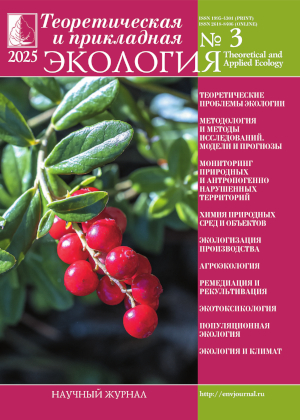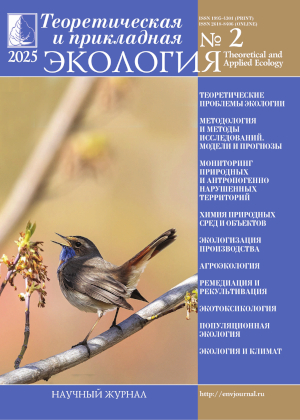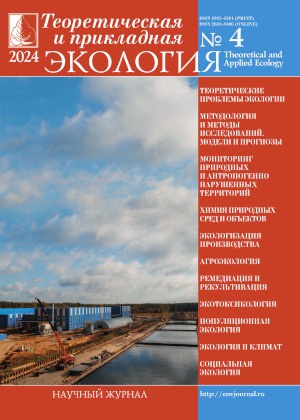 ISSN 1995-4301
ISSN 1995-4301(Print)
ISSN 2618-8406
(Online)
Online version of the journal
|
The state of forest phytocenosis after thinning in violation of technology |
||||
| E.V. Lelekova, I.A. Konovalova | ||||
| Section: Monitoring of natural and anthropogenically disturbed areas |
||||
| The article presents the data of a study of forest stands after thinning with violations of technology. These are the control indicators of the state of the phytocenosis in a series of further monitoring works that are currently relevant due to the increased cases of illegal logging. In the course of the work, the authors found a deterioration in the tree stand characteristics. This contradicts the very essence of the ongoing forestry activity. The trees left behind should be the best growing. It is for them that the optimal conditions for development and growth are created. Instead, the completeness in 60% of cases decreased to a critical minimum: 0.4 units. The species composition of the remaining stand is heterogeneous, unevenly distributed, with a large percentage of selection of the target (Pinus sylvestris L.) and the preservation of temporarily target (Betula pendula Roth) species. Instead of weakened and sick trees, healthy individuals were cut down. The overall viability of the remaining stand after care is weakened: the crown is sparse, the annual growth is reduced, there are separate dry branches. At 30% of the test sites, the main species is absent. Natural renewal is mainly represented by reliable young individuals of spruce, fir, birch and linden. Non-viable young individuals of these species were not found in the study area. The growing individuals of spruce were recorded in all the surveyed areas. Their number is 1110 units/ha. Other species grow in groups and are also reliable in terms of development. Young individuals of P. sylvestris L. in the amount of 40 pcs/ha were recorded on 20% of the plots; Abies sibirica Ledeb. – 180 pcs/ha on 10%; B. pendula – 160 pcs/ha on 20%; Tilia cordata Mill. – 120 pcs/ha on 10% of the plots. Taking into account the growth rate and the number of spruce undergrowth, in the future, a change in the species composition of the mother stand from pine-birch to spruce-birch is predicted in this area. | ||||
| Keywords: thinning of plantings, thinning out, tree stand, fullness of the stand, vital state of the stand, natural renewal, undergrowth |
||||
| Link | ||||
| Article published in number 1 for 2022 DOI: 10.25750/1995-4301-2022-1-056-063 |
||||
|
|
36, Moskovskya street, Kirov, 610000, Editorial Board "Theoretical and Applied Ecology." Phone/fax: (8332) 37-02-77 e-mail: envjournal@vyatsu.ru The journal was founded in 2007 |
||||||




 Select viewing options
Select viewing options